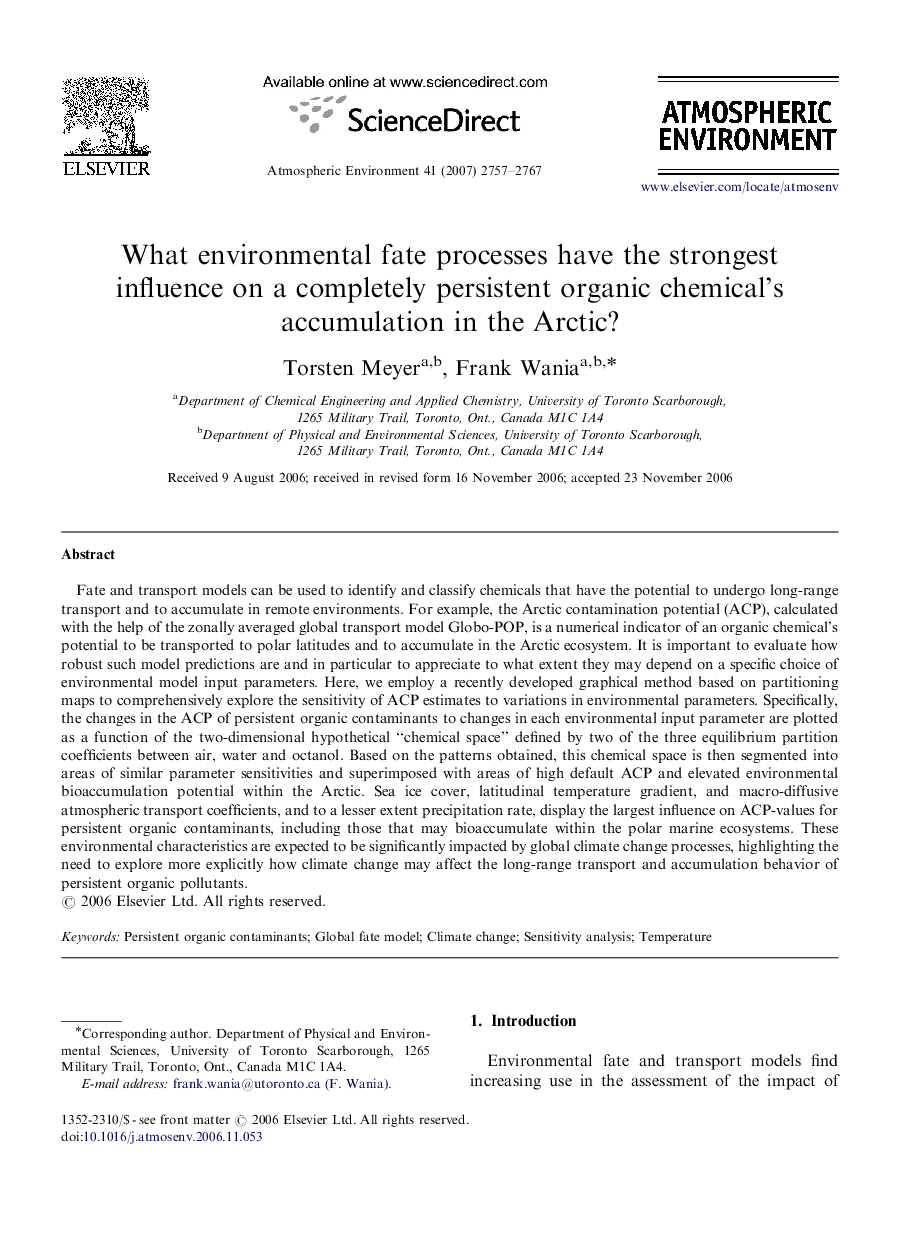| Article ID | Journal | Published Year | Pages | File Type |
|---|---|---|---|---|
| 4442939 | Atmospheric Environment | 2007 | 11 Pages |
Fate and transport models can be used to identify and classify chemicals that have the potential to undergo long-range transport and to accumulate in remote environments. For example, the Arctic contamination potential (ACP), calculated with the help of the zonally averaged global transport model Globo-POP, is a numerical indicator of an organic chemical's potential to be transported to polar latitudes and to accumulate in the Arctic ecosystem. It is important to evaluate how robust such model predictions are and in particular to appreciate to what extent they may depend on a specific choice of environmental model input parameters. Here, we employ a recently developed graphical method based on partitioning maps to comprehensively explore the sensitivity of ACP estimates to variations in environmental parameters. Specifically, the changes in the ACP of persistent organic contaminants to changes in each environmental input parameter are plotted as a function of the two-dimensional hypothetical “chemical space” defined by two of the three equilibrium partition coefficients between air, water and octanol. Based on the patterns obtained, this chemical space is then segmented into areas of similar parameter sensitivities and superimposed with areas of high default ACP and elevated environmental bioaccumulation potential within the Arctic. Sea ice cover, latitudinal temperature gradient, and macro-diffusive atmospheric transport coefficients, and to a lesser extent precipitation rate, display the largest influence on ACP-values for persistent organic contaminants, including those that may bioaccumulate within the polar marine ecosystems. These environmental characteristics are expected to be significantly impacted by global climate change processes, highlighting the need to explore more explicitly how climate change may affect the long-range transport and accumulation behavior of persistent organic pollutants.
